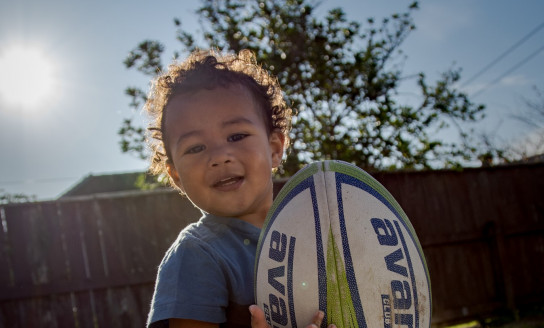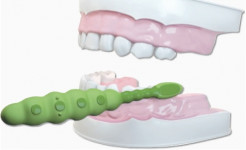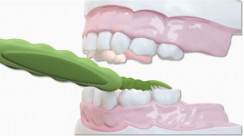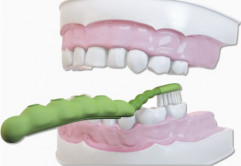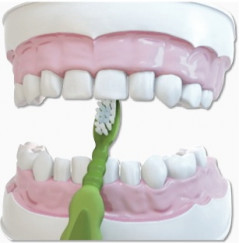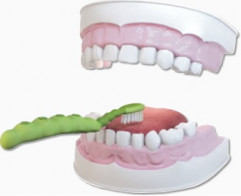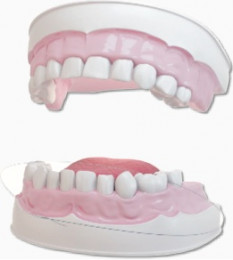Your child’s baby teeth will help them eat and speak well, and they also guide the development of the second set of teeth. It’s important to look after your child’s first teeth, because healthy baby teeth usually mean healthy adult teeth too. You can look after their teeth by:
- brushing your child’s teeth twice a day
- taking your tamariki for regular dental check-ups
- checking every month for signs of tooth decay (holes in their teeth)
- choosing healthy snacks for your child
- making sure they drink only water or milk.
How to brush your child’s teeth
Starting to clean your child’s teeth as soon as they pop through the gums will help keep their teeth and gums healthy. Brushing their teeth twice a day will help make toothbrushing a part of their regular daily routine, hopefully for the rest of their life.
Tamariki will be able to start brushing their own teeth when they're coordinated enough to tie their own shoe laces (usually between five and eight years old) – but until then, it's up to you! It can be a bit challenging to get them to stand still, and you may find it easier to stand behind them and gently tilt their head back as you brush. Use a small toothbrush with soft bristles and a smear of regular-strength (1000ppm) fluoride toothpaste.
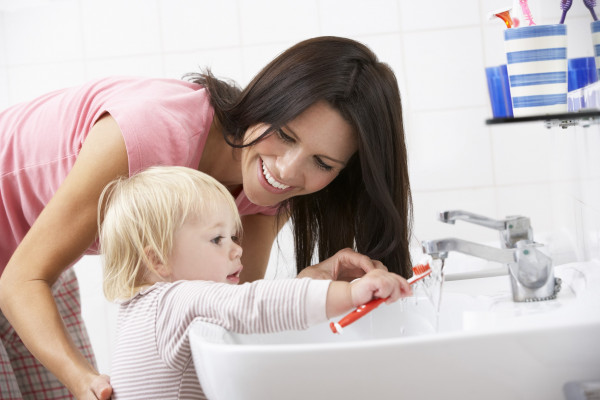
Image courtesy of Colgate
How much toothpaste?
You only need a very thin smear of fluoride toothpaste on the toothbrush – it’s a good idea to put it on the toothbrush yourself rather than letting your child squeeze it on. Children will swallow some of the toothpaste for a while before learning to spit it out, so just use a little. If you use too much toothpaste, or let them eat it, it can cause white speckles on their developing adult teeth.
Clean your wee one’s teeth in the morning and before they go to bed at night. You might like to teach your child to clean their teeth by letting them have a turn after you’ve finished brushing their teeth for them. They’ll also develop good teeth cleaning habits by copying you brushing your teeth. Here’s how to brush your child’s teeth.
|
Step 1
|
Place the brush at an angle on the outer gumline with the bristles facing towards the gum. Wiggle gently back and forth, repeat for each tooth. |
|
Step 2
|
Then brush the inside of each tooth using the same wiggling technique as in Step 1 |
|
Step 3
|
Brush the chewing surfaces of the teeth using a backward and forward motion. |
|
Step 4
|
Use the tip of the brush behind each front tooth both top and bottom. |
|
Step 5
|
Gently brush the tongue and gum line. |
|
Step 6
|
For upper teeth, have the child tilt their head right back. Once two teeth are touching, you can start flossing too. Use waxed floss tied in a circle. Ask your child to lie down and open their mouth wide, and floss between all teeth that are touching. |
Thanks to Colgate and the NZ Dental Association's Healthy Smiles for their contributions.
Taking your child for regular dental check-ups
Regular check-ups increase the chances of finding and treating any holes or tooth decay in your child’s teeth.
As soon as the teeth come through, enrol your child with your local Community Oral Health Service by calling 0800 TALK TEETH or 0800 825 583. Community dental services are often located in primary schools. Your dental therapist will tell you how often your child should have a check-up.
Basic dental care is free in New Zealand until children turn 18.
If your child accidentally bumps their teeth, take them to a dental therapist in your community dental centre or to a dentist, even if the teeth still look all right.
Checking your child’s teeth
It’s a good idea to check your child’s teeth regularly to check for dental decay. Lift your child’s lips to check their teeth are smooth and white, with no brown or yellow stains. If you notice any brown areas on their teeth, take your child to a dental therapist or your family dentist.
Common dental problems
Choosing healthy snacks
Foods that are high in sugar can damage your child’s teeth and cause tooth decay. To protect your child’s teeth, give them low-sugar snacks like fruit, fresh vegetables, yoghurt and other dairy foods. Healthy eating = healthy teeth.
Water or milk are the best drinks for your child
The best drinks for your child’s teeth are water and milk. Drinks with natural or added sugar, like fruit juice, cordial, fizzy drinks, flavoured milk and chocolate drinks, can cause tooth decay.
You should put only water or milk in your child’s bottle.
